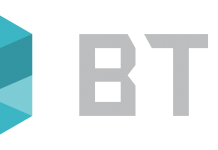RISE Financial Technologies Ltd., developer of distributed technology solutions for financial market infrastructures and regulated financial institutions, is releasing a paper. âLinking Cash and Securities for Delivery Vs Payment Settlement in Distributed Ledger Arrangementsâ explores how cash and securities can be brought into a blockchain system, how ownership can change via delivery versus payment settlement, and how to go about planning for modernisations using distributed ledger technology. Delivery versus payment is a fundamental requirement as it eliminates the principal risk that either counterparty to a trade or financing transaction could lose the full value of cash or securities whilst either leg of the trade or transaction remains unsettled.
In the publication, the authors explain possible benefits of blockchain migration and difficulties that might be faced during the transition. The report explores how existing securities and cash can be moved into blockchain arrangements for delivery versus payment transaction settlement. The paper also provides recommendations for financial market infrastructures at transferring across to distributed ledger models successfully.
Benefits of blockchain-optimised settlements that were discussed included: increased speed, settlement, transparency and confidentiality, lower custody risk, security and systemic resiliency , capital and balance sheet efficiency, cost efficiency and transforming and integrating trade documentation and transmission amongst other things. On the other hand, the potential obstacles were noted as legal uncertainty, compliance, standardisation of payment systems and other services, interoperability, dispute resolution on an immutable system, governance and scalability.
Balancing the pros and cons, the report concludes that the technology has reached a point where PFMI-compliant delivery versus payment settlement can be achieved and that early integration with existing systems is advisable and profitable. To this end, the paper suggests collaboration with issuers, investors, banks, custodians and intermediaries to find early adoption cases and develop roadmaps to plan future developments. In addition, it advises reaching consensus on an initial system governance model, rules with and permissions with all stakeholders and adhering to industry standards to foster a system where interoperability and standardisation are possible.









